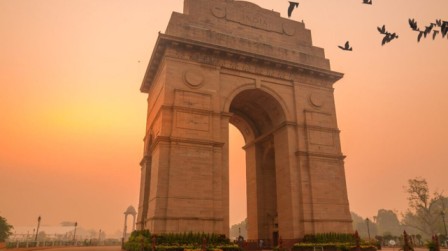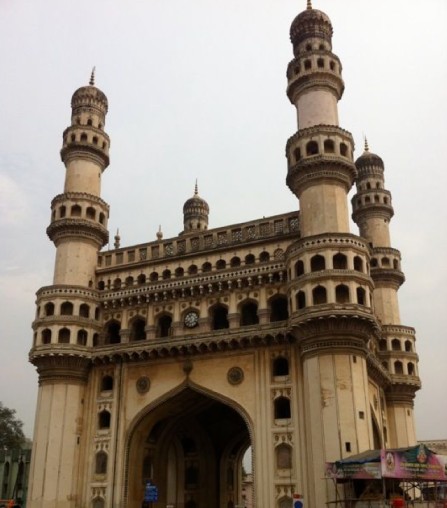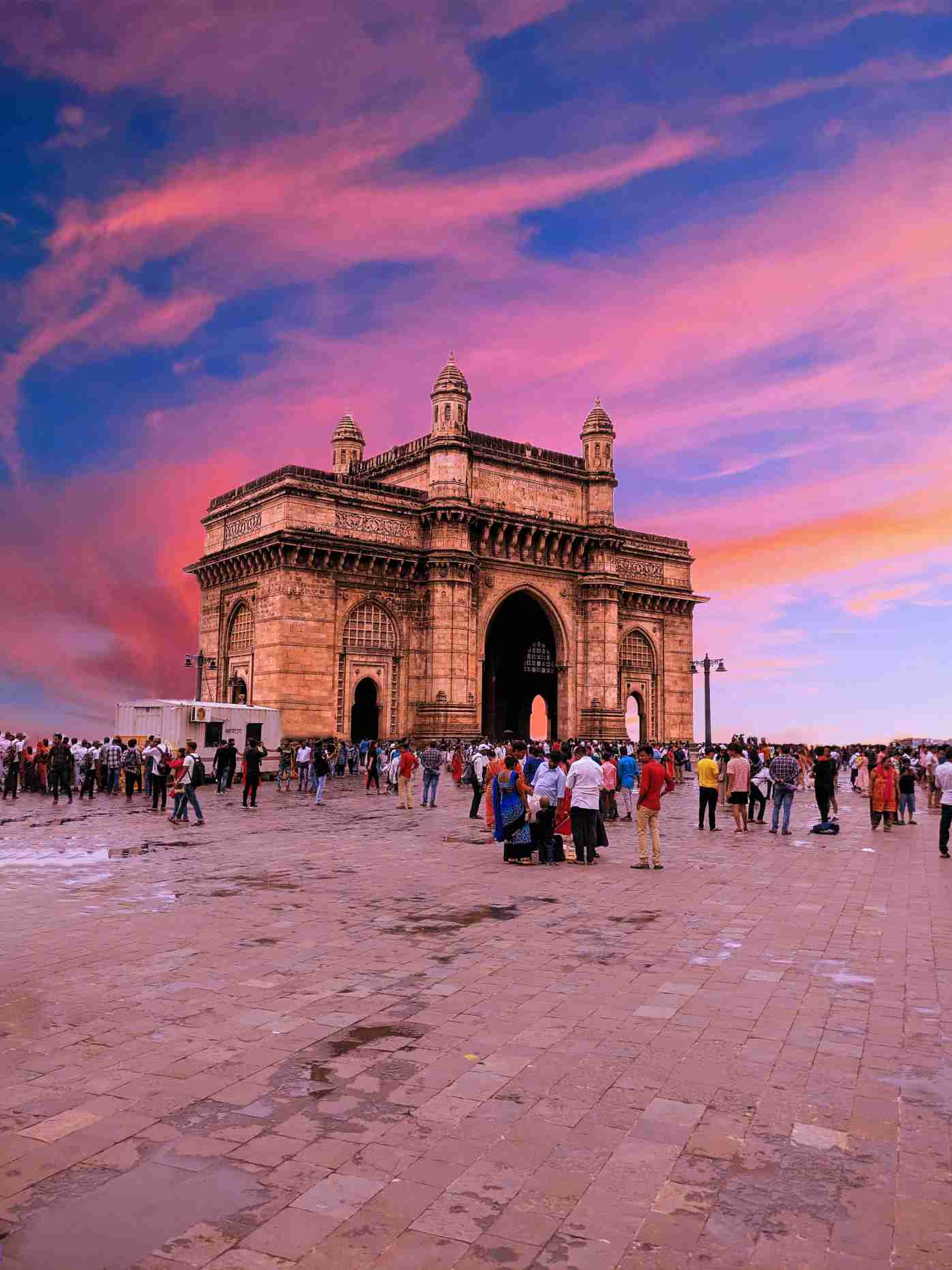They say people who have big hearts are usually from Delhi. The capital city is home to many important monuments and buildings of national significance.
One such prime monument which is the memorial for many brave hearts who gave away their lives for their country’s safety and pride is the – India Gate located astride ‘Rajpath’ on the eastern edge of the ‘ceremonial axis’ of New Delhi.
History of India Gate History Existence
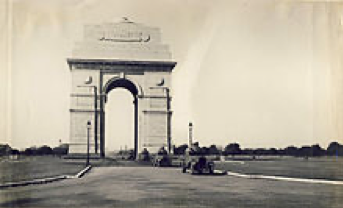
The India Gate formerly known as the ‘All India War Memorial’ came into existence for building war graves and memorials to soldiers who were killed during the First World War.
The foundation was laid on 10th February 1921 at 16:30 and exactly after 10 years from the stone laying ceremony; ‘Lord Irwin’ inaugurated the memorial on 12th February 1931.
Design and Structure of India Gate
Designed by ‘Sir Edwin Lutyens’, he was not only the main architect of New Delhi but a leading designer of war memorials.
The India Gate is considered just to be as ‘Cenotaph in London’, a secular memorial, free of religious and culturally-specific iconography such as crosses.
India Gate in New Delhi
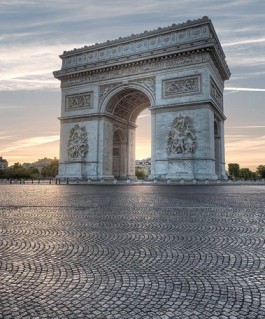
It has been called as the creative version of ‘Arc de Triomphe’ which has a span of 30 feet. It is 42 metre tall and stands on a low base of red Bharatpur stone and rises at each stage.
The gate of the memorial is a hexagon complex with a diameter of 625 metres and covers approximately 306,000 square metres in area.
Inscriptions
The India Gate is inscribed with the Imperial Suns while both sides of the arch have INDIA, flanked by the dates MCMXIV on the left (1914) and MCMXIX on the right (1919).
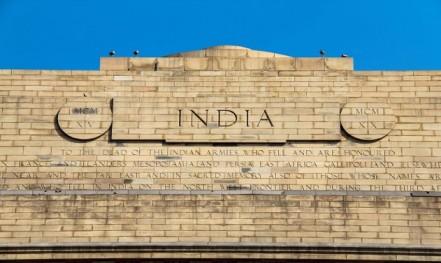
13,218 war dead are commemorated by their names on the gate. Due to security reasons, it is not permitted to read the names inscribed though they can be seen on the Delhi Memorial.
Canopy
150 metres east of the gate, at the junction of six roads stands a 73-foot cupola, inspired by the sixth century pavilion from Mahabalipuram.
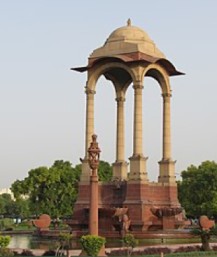
The canopy was constructed in the year 1936 as a tribute to the deceased Emperor of India ‘King George V’ and covered a 70 foot tall marble statue.
The canopy was originally topped by a Tudor Crown and bore the Royal Cyphers of George V which were ultimately removed on 12th August 1958.
The statue remained at the same place for two decades but started facing strong criticisms from the Indian politicians. Due to an unfortunate event where two members of Samyukta Socialist Party defaced the imperial crown, nose and one ear, leaving a photo of ‘Subhas Chandra Bose’ at the monument just two days before Independence Eve in 1965.
Though the Indian government decided to relocate the statue, it faced a strong criticism for taking this stance.
British Government strongly rejected the proposal to repatriate the statue due to insufficient funds.
Finally in late 1968, the statue was removed from under the canopy and briefly placed in storage before being moved to ‘Delhi’s Coronation Park’.
Amar Jawan Jyoti
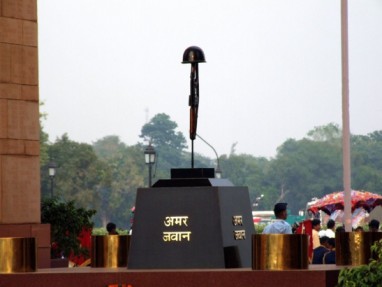
Amar Jawan Jyoti (the flame of the immortal soldier), is a structure having black marble plinth, with a reverse self-loading rifle L1A1, capped by a war helmet, bounded by four urns, each having a permanent light coming from compressed natural gas flames, erected under the India Gate to commemorate the soldiers martyred in the war of liberation of Bangladesh in 1971.
It was inaugurated by then Prime Minister ‘Indira Gandhi’ on 26th January, 1972 on the eve of twenty-third Republic Day celebrations.
India Gate for Social Causes
India Gate is illuminated every evening from 1900 hrs to 2130 hrs.
The Republic Day Parade which people impatiently wait for every year starts off from ‘Rashtrapati Bhavan’ and passes round the India Gate.
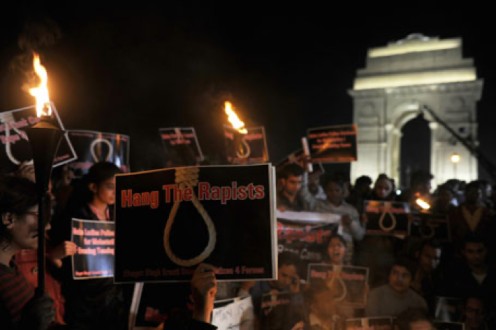
It is also a popular spot for civil society protests who are seeking for justice with historical protests such as Nirbhaya rape case, Unnao rape case, and anti-corruption movement and so on.
Things to do –
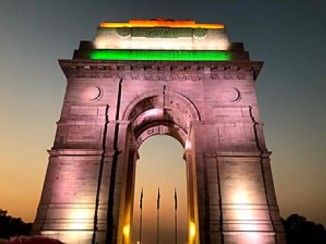
You can easily witness many families especially during winters soaking the winter sun and going around for picnics near the garden area of India Gate.
Going on a stroll at Rajpath especially during early hours is itself a serene experience.
You can just stand and admire the beauty of India Gate as you can easily get lost in the marvellous combination of Indian and European architecture especially of that time. India Gate looks even more amazing during the evenings as it gets illuminated and also the sunrises and sunsets are something that one should not miss.
After all, the whole idea behind the establishment of this monument is paying your tribute to the martyred soldiers. Send out your prayers to these brave souls who fought till their last breath for their country’s bright future.
Entry Fee of India Gate: No Fee
Timings: All days of the week; 24 hrs
How to reach India Gate?
The most comfortable option keeping in mind the heavy traffic on the streets of Delhi to reach India Gate is metro.
The nearest metro is the Central Secretariat Metro Station which falls on the yellow line. Other metro stations are Pragati Maidan, Race Course and Barakhamba.
You can easily opt for an auto rickshaw or a taxi from outside the metro station to reach India Gate.
Want to know more about what to do in Delhi then check these out- Must See places in Delhi , Red Fort and Best Street Shopping places in Delhi




